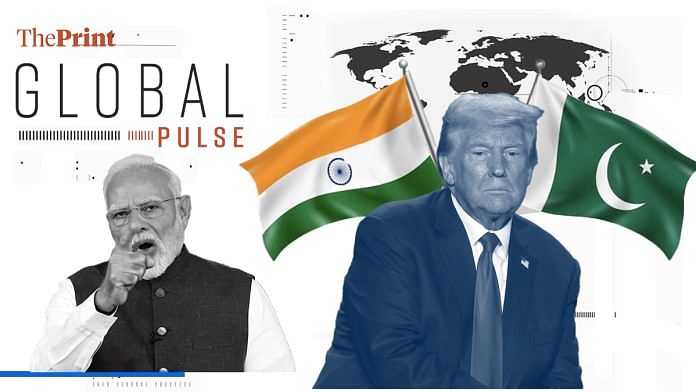New Delhi: US President Donald Trump’s claim that he brokered peace during the India-Pakistan flare-up marks a turning point. It’s a move that could ricochet across the globe—be it in Gaza, the gulf, or Ukraine, writes Gideon Rachman in The Financial Times.
“Faced with all these frustrating foreigners, there is a clear temptation for Trump to ignore the outside world and to rely on the ‘big beautiful ocean’ to keep America safe. But—as last week’s events in South Asia proved—that is easier said than done,” Rachman writes.
Amid the ‘fog of war’, satellite imagery has emerged as the ultimate truth-teller. In India-Pakistan’s most “expansive” conflict in decades, images show that damage was “far more contained than claimed”, and “mostly inflicted by India on Pakistani facilities,” report Agnes Chang, Pablo Robles and Mujib Mashal in The New York Times.
“Where India appears to have had a clear edge is in its targeting of Pakistan’s military facilities and airfields, as the latter stretch of fighting shifted from symbolic strikes and shows of force to attacks on each other’s defense capabilities,” says the report.
The Washington Post also analyses over two dozen satellite images and concludes that Indian strikes “damaged runways and structures across six airfields.”
“The satellite evidence is consistent with the claim that the Indian military inflicted meaningful—though in my view not devastating—damage on the Pakistan air force at a number of bases across eastern Pakistan,” analyst Christopher Clary, an associate professor at the University at Albany tells Imogen Piper, Evan Hill, Maham Javaid and Rick Noack of The Post.
As for the critical Nur Khan air base in Rawalpindi, known for its proximity to the Strategic Plans Division—where Pakistan’s nuclear weapons are manned—“two mobile control centres were destroyed”, the analysis shows.
An analyst also tells The Post that such an attack could have been interpreted “as an attempt to destroy the control centre of the country”.
The stand-off between the two neighbouring nations was a testament to a new dawn in modern warfare. And, in Pakistan’s case, it was the first time that China’s J-C10 jets were used in combat, report Helen Davidson and Amy Hawkins in The Guardian.
“And technically, India did not use American weapon systems during this round. But the surprising victory of Chinese J-10 and PL-15 [missiles] will force people to reconsider the military balance of power in the event of a Taiwan contingency,” Yun Sun, director of the China Programme at the Stimson Centre explains to The Guardian—further reiterating the geopolitical weight the conflict carries.
Disinformation emerged as a key weapon in the India-Pakistan conflict, and the intermingling of tech and war “raise the risk that the next crisis will be even more escalatory”, notes Michael Kugelman in Foreign Policy’s South Asia Brief.
“Two factors help explain the recent flood of false content. One is the crisis itself: It featured intense amounts of kinetic action—the most since a brief India-Pakistan conflict in 1999—and it played out over several days. There was plenty of fodder to misrepresent. And such a serious crisis meant that emotions were high and the desire for real-time information was strong, creating incentive for more content,” he writes.
The Economist combs through Prime Minister Narendra Modi’s address to the country and finds that it “conveyed India’s frustration at America’s role in freezing the nuclear armed neighbours’ worst fighting in 25 years”.
Although, he made no mention of Donald Trump, nor the US.
(Edited by Zinnia Ray Chaudhuri)






